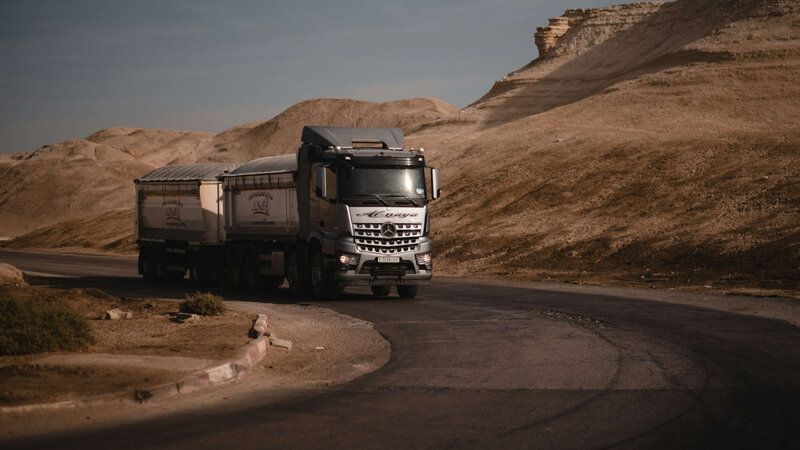The Potential of Two-Way Cameras for Safer Trucking: Examining Six Improvements

While operating prime movers can be challenging, new technologies have made them safer. More logistics companies have adopted two-way cameras to protect their drivers and trucks. How can these devices benefit your company?
Here are six ways two-way cameras can benefit your prime movers.
1. Live Monitoring
An immediate benefit of two-way cameras is live monitoring. These devices record what’s happening on the road and inside the vehicle, thus heightening transparency. Supervisors can use these advanced cameras to ensure drivers follow company policies and best safety practices. It’s also useful by letting drivers see what’s in front of them, thus validating their assessments.
Monitoring prime movers and their surroundings is essential for safety. Drivers are on the road for 70 hours a week or more, so they can become fatigued. Supervisors monitoring their employees can detect if they’re tired and alert when it’s time to stop driving. Two-way cameras help drivers and management teams be more aware and accountable.
2. Increased Documentation
Incidents may occasionally occur with your vehicles, especially if the drivers are older. A 2024 study of prime movers in China found that drivers over 50 are 3.8 times more likely to have a fatal crash than operators under 30. Two-way cameras benefit your company and drivers because you have increased documentation. This evidence is helpful when disputing or supporting claims.
Two-way cameras provide footage of the road and your driver, enhancing transparency in lawsuits and other cases. If an accident occurs, your company has more backing to dispute false claims. Your camera could include footage of inspections, driving and other necessary tasks. Two-way cameras resolve incidents faster, thus decreasing downtime and helping your drivers get back on the road more quickly.
3. Emergency Assistance
When emergencies arise, your driver must reach safety quickly. Two-way cameras benefit prime movers if they have hands-free, two-way audio capabilities. The driver doesn’t have to take their hands off the wheel or look around for their input device. Dispatchers can talk them through the situation and navigate the prime mover more effectively.
Another benefit of two-way cameras is their 360-degree view. Seeing more surroundings helps dispatchers determine where the vehicle is, even if the driver is unaware. This technology supports GPS tracking to pinpoint the precise location. If an accident has occurred, the two-way camera may send information to the first responders to help them understand the situation before arriving.
4. Statistical Feedback
Positive feedback and constructive criticism are essential for drivers to do their best work. How can two-way cameras assess prime mover operators? These devices can leverage data and statistics to pinpoint a driver’s performance. Advanced cameras can go the extra mile by detecting how often operators look away from the road and become distracted.
Two-way cameras also measure crucial statistics, such as average driving speed and braking. This data helps drivers understand what safety aspects they must improve. Logistics companies should consider gamifying these metrics and awarding prizes to the safest drivers. Experts say these workplace programs improve engagement and productivity by tapping into intrinsic motivators.
5. Reduced Distractions
Operating a prime mover for numerous hours may feel monotonous for drivers and increase distractions. However, two-way cameras combat this problem by heightening accountability and detecting these outside influences. Supervisors don’t have to continuously monitor drivers, as AI-powered technology detects distractions inside the prime mover. Real-time alerts intervene and make the journey safer.
For instance, two-way cameras can identify smartphone usage inside the vehicle. These devices notify the driver and the company, thus encouraging employees not to touch their personal phones. Another potential distraction is eating while driving. Two-way cameras are intelligent enough to identify when prime mover operators are distracted by their meals or snacks. With a simple reminder, the driver can reduce interruptions and stay on the road.
6. Improved Training Courses
When a newly licensed driver is on the road for the first time, they may need help in their onboarding. Two-way cameras make the transition easier by providing feedback and coaching opportunities. Supervisors can watch their new employees drive and provide real-time assessments and adjustments. With this feature, management doesn’t have to be on the road to coach their operators.
Two-way cameras are unique because they can tailor learning opportunities to your drivers’ needs. Supervisors can coach operators using specific data points if operators speed or brake too harshly. You can also leverage two-way cameras to test drivers in particular scenarios, such as heavy traffic or bad weather. Employees with these professional development opportunities typically see increased job satisfaction and more motivation.
Improving the Safety of Prime Movers
Two-way cameras are a critical safety innovation for prime movers and drivers worldwide. These gadgets increase objectivity and accountability on the road, thus helping young and experienced employees. Logistics companies should consider two-way cameras to decrease downtime and protect their drivers.
Author Bio: Oscar Collins is an auto writer with over five years of experience in the industry. He has bylines at Carwash, Global Trade Mag and InAutomotive. Follow him on X @TModded for frequent updates on his work.
